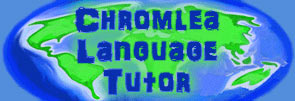The Japanese Writing System
There are several different writing systems used together to form the complete Japanese written language. These are known as the Kana and Kanji in their most broad terms. Japanese Kana consists of two unique syllabaries – Hiragana and Katakana which are used in conjunction with Kanji to form complete Japanese sentences.
While Romaji and Furigana are two other subsets of the Japanese written language, they are only used for specific purposes. A more detailed explanation is provided below under each corresponding heading.
As you can see, there are many different components used in the Japanese writing system – Hiragana, Katakana, Kanji, Furigana, and Romaji. Though it can be rather overwhelming to try and learn all of them at once, by breaking them into their sub-groups, they become much less intimidating, and can therefore each be learned more efficiently.
For an overview of each writing system, continue reading or use the quick links below to skip to a specific writing system. I've broken the article down into several sections so you can better understand how each of the different writing systems fit into the modern Japanese language.
Quick links:
Japanese Kana – Hiragana (ひらがな)
Japanese Kana – Katakana (カタカナ)
Kanji (漢字)
Furigana (振り仮名)
Romaji (ローマ字)
Japanese Kana – Hiragana (ひらがな)
Of the two forms of Japanese Kana (Hiragana and Katakana), the one most commonly used in Japanese writing is Hiragana. Hiragana uses cursive forms to produce a syllabic alphabet, and is the first Japanese writing system that is taught to young students in Japan.
Each character represents either a vowel sound or the sound of a consonant (or two consonants) plus a vowel – examples: a, i, u, e, o (あ, い, う, え, お)… ka, ki, ku, ke, ko (か, き, く, け, こ)… sa, shi, su, se, so (さ, し, す, せ, そ).
Hiragana is used to write Japanese words and add grammatical parts to a Japanese sentence. In books aimed at very young children who are new to reading, it is common for the full texts to be written using Hiragana alone. If you'd like to practice your Hiragana memorization, books written for youngsters are definitely useful.
Japanese Kana – Katakana (カタカナ)
Katakana is written in a rectilinear style and is mostly used to write any foreign language loan words. Foreign language loan words are words brought in from other languages that have (mostly) kept the spoken sounds of the original language – ex. computer is used as a loan word and is pronounced Konpyuutaa (コンピューター) in Japanese.
Katakana is also used when writing proper nouns, in onomatopoeia, or to add emphasis to a specific word or phrase within the text.
Like Hiragana, each Katakana character represents either a vowel sound or the sound of a consonant (or two consonants) plus a vowel – examples: a, i, u, e, o (ア, イ, ウ, エ, オ)… ka, ki, ku, ke, ko (カ, キ, ク, ケ, コ)… sa, shi, su, se, so (サ, シ, ス, セ, ソ).
Kanji (漢字)
Kanji are the complex characters "borrowed" from the Chinese language. Each Kanji character represents a specific idea or concept. Since Kanji is originally from China, each character has a Chinese reading known as On'yomi (音読み) and a Japanese reading known as Kun'yomi (訓読み).
Depending on the sentence, a Kanji character may be read with its Chinese reading or its Japanese reading, and it is common for more than one Kanji character to be combined to form a separate idea or concept.
Furigana (振り仮名)
Furigana is most often written using hiragana, but is sometimes written using Katakana. In a small font, Furigana is written on top of a Kanji character to provide the phonetic reading of the Kanji.
Depending on the reading level of the text, the amount of Furigana can change. Text written for young or novice readers often includes Furigana above of each Kanji. Text written for older students or intermediate readers, includes Furigana over the more difficult Kanji, while text geared toward adults will only include Furigana if obscure or rarely used Kanji are present.
Romaji (ローマ字)
Text written in Romaji uses Latin characters instead of the traditional Japanese characters. Though there are several Romanization systems in common use, they are all relatively similar and often chosen by learner preference.
Examples of Japanese words written in Romaji would be "Konnichiwa" and "Sayounara" meaning "Hello" and "Good bye" respectively.
Romaji is more commonly used by people learning Japanese outside of Japan due to the more familiar characters that are used, however, most people in present day Japan are also able to read and understand Romaji, as it has been taught in Japanese elementary schools since World War II.
Next Up
Japanese Greetings and Goodbyes: Learn how to say greetings and goodbyes in Japanese.
The Fine Print


